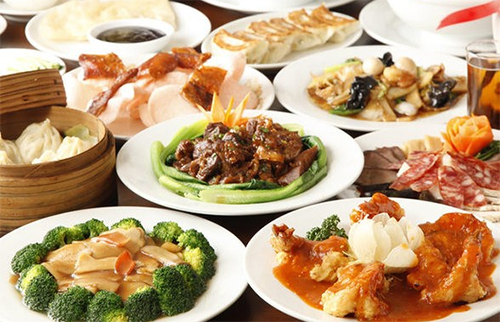Chinese cooking has a long history and many schools. The basic characteristics of Chinese cooking are summarized in the following four aspects:

- Chinese cooking focuses on the research and production of distinctive dishes
China has a vast territory and many flavor schools. Classified by consumption characteristics, there are palace flavor, official flavor, market flavor, religious flavor, and folk flavor; by region, there are Shandong flavor, Jiangsu flavor, Sichuan flavor, Guangdong flavor, Beijing flavor, Zhejiang Flavor, Anhui flavor, Hunan flavor, Hubei flavor, other brother ethnic flavors; classified according to the imitation era, there are imitation Tang flavor, imitation Song flavor, imitation meal flavor, etc. Various flavor schools have obvious differences in materials, seasonings, cooking methods, and flavor characteristics of finished dishes. Where there are differences, there will be changes, and the dishes are also changing with each passing day. Chinese cuisine is based on the research and production of these distinctive dishes.
- Chinese cooking is restricted by the flavor of folk cooking
In a certain sense, Chinese cuisine has developed and grown on the basis of folk cooking. Market flavors and home-cooked flavors are the essence of Chinese folk cooking culture, which are widely imitated and adopted by modern cooking. From ancient times to the present, Chinese cooking has been obviously constrained by the flavor of folk cooking.

- Chinese cooking changes with the development of society
The development history of ancient Chinese cooking, modern cooking, contemporary cooking and modern cooking proves that Chinese cooking is constantly changing with the development of society, and this development and change is an important content that constitutes the basic characteristics of Chinese cooking. Highlighted in ten aspects.
- The value of cooking raw materials has shifted. The selection of raw materials has changed from simple to complex, from rough to fine, from random to deliberate. Fresh, natural, wild vegetables, game and other raw materials are widely used.
- The combination of raw materials and the compatibility of raw materials and seasonings are more diversified and rationalized. Coarse grains and dishes are cooked together to the market. Safety, hygiene, and nutrition are placed in a more important position.
- Flavors blend with each other, and regional flavors continue to rapidly expand and spread outward, and are integrated with the local food culture. The evolution mode of flavors keeps pace with the times and presents complex and diversified flavors.
- There are more varieties of cooking methods, and some traditional cooking methods are gradually replaced by modern cooking methods; some ancient cooking methods are “returning to simplicity” to the market again; cooking methods show a trend from complex to simple.
- The shape of the dishes has undergone an evolution from simple to cumbersome, and from cumbersome to concise, bright and suitable. The dish decoration pays more attention to the finishing touch, simple and easy, avoiding falsehood and seeking truth.
- The cooking utensils have undergone historic changes, and the containers have been refurbished in more designs. The containers representing the personalized colors of the catering industry have increasingly shown a stronger cultural taste, and mechanized operations have gradually replaced manual operations.
- The cooking production technology is constantly improving, the cooking process is more stringent, and the technological content is getting higher and higher. The production of dishes is gradually moving towards proceduralization, unification, standardization and standardization with the restaurant as a unit.
- The product structure is gradually adjusted, a variety of dishes have emerged, and the variety of dishes has become more colorful.
- Give new connotations to the traditional concept of “authentic”, and the dishes advocate “the taster is treasured”.
- The time management of the cooking process is more stringent, and the production of dishes strives to be concise, convenient and efficient.
- Chinese cooking is regulated by the attributes of the dishes
The attributes of a dish refer to the inherent performance of the dish itself in the process of linking it with the quality of the dish. Dishes attributes are divided into essential attributes and non-essential attributes. The essential attributes of dishes refer to the fundamental properties that form the quality of the dishes, that is, the internal connections or prescriptive internal basis of the basic elements in the process of forming the dishes. The non-essential attributes of dishes refer to secondary related attributes that form the quality of dishes.
Although Chinese dishes are in various forms, they all share common technical attributes as far as cooking technology is concerned. Cooking technology is actually the integration of a series of inevitability and regularity contained in the dishes. Therefore, in the entire process of Chinese cooking, the attributes of the dishes control and regulate all aspects of cooking from beginning to end.